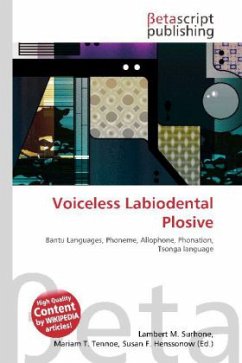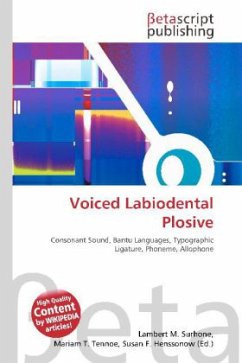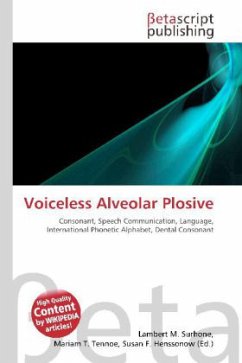Please note that the content of this book primarily consists of articles available from Wikipedia or other free sources online. The voiceless labiodental plosive is a consonant sound produced like a [p], but with the lower lip contacting the upper teeth, as in [f]. This can be represented in the IPA as [p ]. A separate symbol not recognized by the IPA that is often seen, especially in Bantu linguistics, is the qp ligature The voiceless labiodental plosive is not known to be phonemic in any language. However, it does occur allophonically. The XiNkuna dialect of Tsonga has affricates, [p f] and [b v] (that is, [ f] and [ v]), which unlike the bilabial-labiodental affricate [p f] of German are purely labiodental. One reason that this sound may be so rare is that a person with uneven upper teeth, or gaps between the teeth, will not be able to completely block the flow of air out of the mouth, and therefore will tend to produce a fricative [f] rather than a plosive [p ].
Bitte wählen Sie Ihr Anliegen aus.
Rechnungen
Retourenschein anfordern
Bestellstatus
Storno








